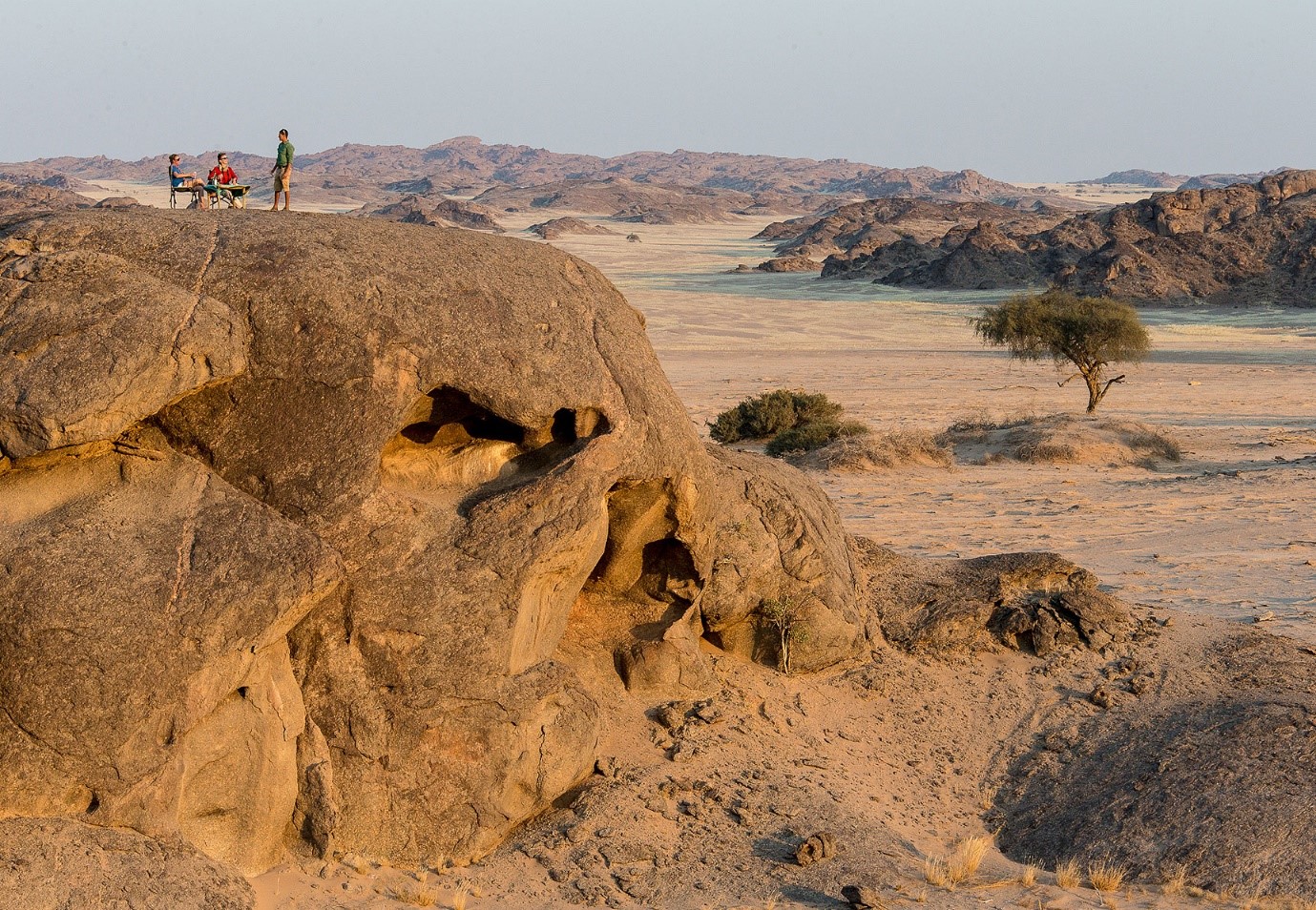In the far northwestern corner of Namibia lies a region called Kaokoland, which is often referred to as Damaraland. This region is both isolated and mountainous. It is a fantastic place to visit whether you are looking for an exciting excursion, unusual scenery, or all three. Kaokoland is a site of amazing beauty and sharp contrasts due to the unusual blend of deserts, mountains, and savannas that make up the landscape there. This article will tell you an overview of what to anticipate while traveling to Kaokoland, including details on the best time to go, how to get there, and a few of the most popular sites to see while you are there.
The incredible landscape is one of the key charms of Kaokoland, and with good reason. This breathtaking location has a wide range of landscapes, from towering red sand dunes to undulating hills covered with baobab trees. There is something here for everyone. Visitors may walk to the peak of the steep Damaraland Mountains to take in some of the region’s most breathtaking panoramas, which are among the greatest in the region.
The scrubby savannas that may be found in the valleys are home to a wide variety of species, including lions, elephants, and giraffes, amongst others. In addition, this part of the world is well-known for its population of desert elephants, which are a distinct subspecies of elephant that has flourished in the region’s dry environment.

The Himba people are one of the last semi-nomadic herding tribes still extant in Africa, and as such, they represent yet another of Kaokoland’s most popular tourist draws. Visitors get the opportunity to gain an understanding of the Himba people’s way of life as well as their culture by traveling to one of their villages. While there, tourists may participate in traditional dances and celebrations and even spend the night with a Himba family. This is a once-in-a-lifetime chance to get a more in-depth knowledge of the Himba people’s culture and way of life.
The months of May through September, which correspond to the dry season, are Kaokoland’s greatest months for tourism. At this time, the roads are easier to navigate, when the weather is warm and bright, and when wildlife is more readily apparent. The rainy season, which begins in October and lasts until April, may render the roads impassable, and the wildlife is more difficult to see at this time.
Due to the region’s very isolated location, traveling to Kaokoland may be a bit of a struggle. Flights departing from Windhoek, the capital city of Namibia, are available and provide the quickest and most convenient route to reach your destination. Tourists may make reservations for guided tours or hire four-wheel-drive vehicles from the location they are staying at. There is also the possibility that some tourists may choose to fly into one of the regional airports and then drive to Kaokoland. This is an exceptional option for those who want to see a variety of other attractions along the route.
In conclusion, Kaokoland is a one-of-a-kind and gorgeous location that is well worth a visit for people who are looking for distinctive landscapes, a diverse array of species, and exciting opportunities for adventure. Put your things away and get ready to go on an adventure in this beautiful location.
A: It is a region located in northwestern Namibia. It is known for its unique landscape and wildlife.
A: It is located in northwestern Namibia, near the border with Angola.
A: Visitors can enjoy outdoor activities such as wildlife watching, camping, hiking, and scenic drives.
A: It is home to a variety of wildlife including elephants, lions, giraffes, and many species of birds.
A: It is not recommended to visit without a guide as it is a remote region with limited infrastructure and access. A local guide can ensure a safe and enjoyable experience.